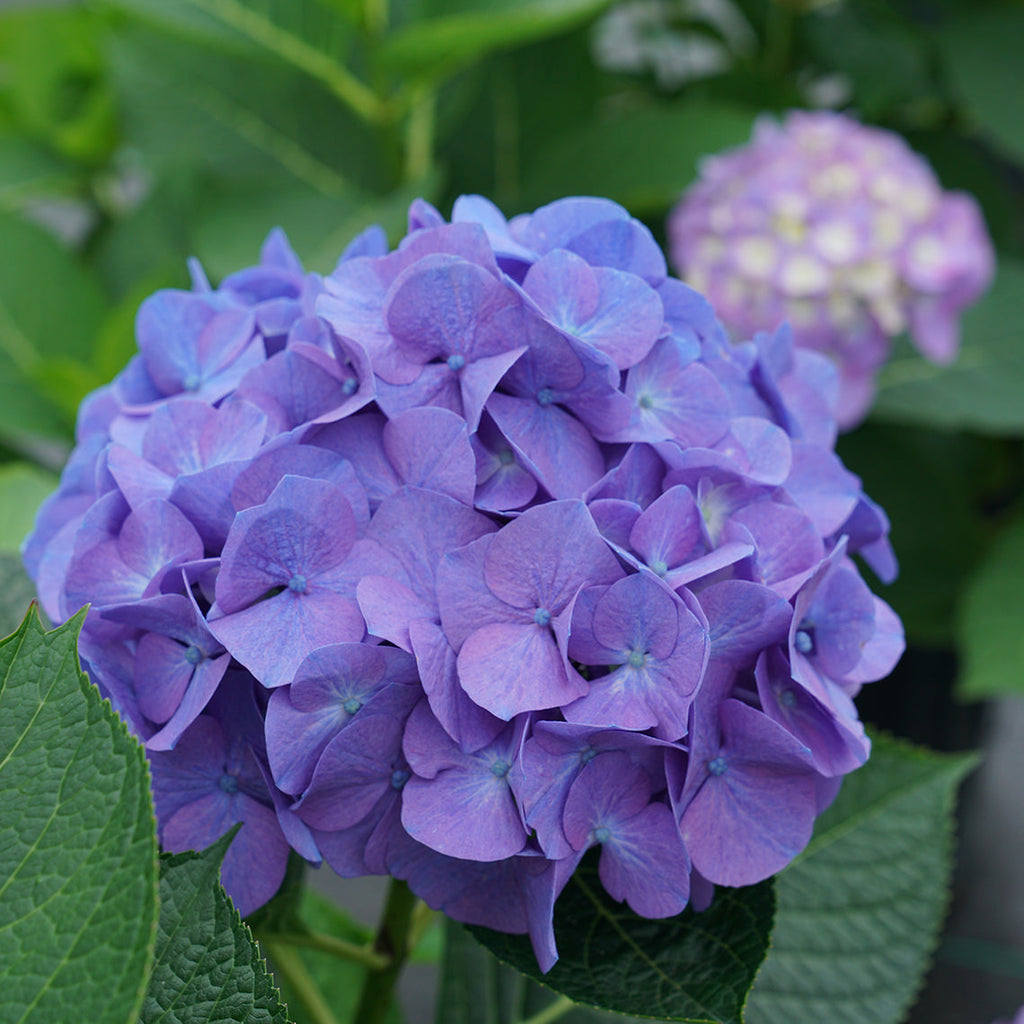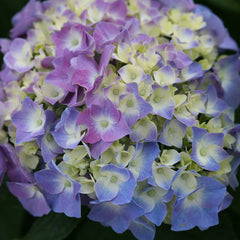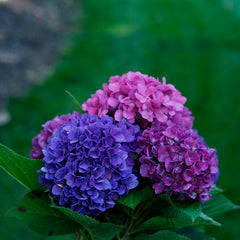The straight facts on hydrangea flower color

There's so much to love about bigleaf hydrangeas (Hydrangea macrophylla), and among the best reasons is their unique ability to change their flower color depending on the soil they are growing in. Few other plants exhibit this incredible chameleon-like characteristic, so it makes growing what's already a beautiful, timeless flowering shrub even more enjoyable. Unfortunately, this trait has also lead to a great deal of confusion about what color a bigleaf hydrangea will bloom, and how that color can be manipulated. Let's set the record straight now!
What Colors are Possible?
You'll find bigleaf hydrangeas in shades of pink, red, blue, and purple, as well as white. White varieties will bloom white in all soils - they never change color. Similarly, varieties that are red (which is actually a very deep pink and not a true scarlet red) will also generally keep that color in all soils. Pink, blue, and purple selections, however, can all vary in color, shade, and intensity depending on soil conditions.

What Causes the Flower Colors to Change
Most people believe that hydrangeas will bloom blue in acidic soils and pink in neutral to alkaline soils. However, soil pH is only one small factor in color change; there are actually three conditions that must be true in order for a hydrangea to bloom blue:
- The soil must contain aluminum;
- The aluminum in the soil must be available for the plant to take up through its roots;
- The variety must be capable of turning blue.
Let's take a closer look at each of these, starting with aluminum. Aluminum is a naturally occurring metal in many soils - in fact, it's the most abundant metal in the earth's crust. While nearly all soils contain some aluminum, it's not necessarily abundant in all areas or soil types. Aluminum forms a tight chemical bond to the soil particles in neutral to alkaline soils (pH of roughly 7.0-8.5+), but in acidic soils (6.9 or lower), it is free for plants to take up and metabolize. This is why it is so widely believed that acidity is the key to blue flowers. However, since the presence of aluminum is the primary factor in color change, and not all soils are equally high in aluminum, acidic soil isn't necessarily enough on its own.
That third qualification, that a variety is capable of turning blue in the first place, is often overlooked. There is an inherent genetic component that determines this: though pink-blooming hydrangeas may have the ability to change color, this doesn't necessarily mean they can make it all the way to blue. Some will turn more of a soft lavender, some only a light baby blue. When a hydrangea has "blue" in its name, like Let's Dance Blue Jangles or the old-fashioned 'Nikko Blue', this merely indicates that it can turn blue - not necessarily that it will be blue, since the aluminum content and pH vary from garden to garden.

What About Purple?
The purple color in bigleaf hydrangeas is often misunderstood. The best, most consistent purple hydrangeas are genetic in nature - in other words, they are inherently purple in acidic soils that contain aluminum, and will never turn blue. Some varieties may display some purple blooms for a season or two, but this usually reflects the conditions that were present in the soil when those flower buds were developing, and as the aluminum is fully metabolized, the flowers will become blue the following season.
